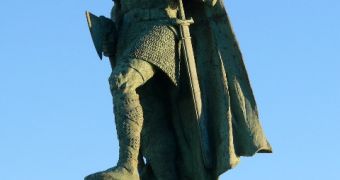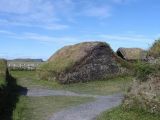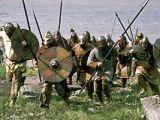Who discovered America? When Columbus returned from the Antilles in 1493, he was not the first European to have stepped in the New World.
It seems that, 500 years before, a group of blond Scandinavians had done it. It happened during the Viking era, when these sailors and warriors were roaming northern Africa, eastern Europe and the Middle East.
In 986, Bjarni Herjolfsson, experimented navigator and adventurer, left Norway to reach Iceland close to the winter. He found that his father had left as part of a fleet led by Erik the Red to colonize a huge land situated to the West and attractively named "Greenland."
So, he set out to Greenland, but he lost his way due to the wind and fog for many days. When he finally spotted land, it was very different from the description of Greenland: it was a land of hills and mighty forests. But, after a few days, the landscape turned more mountainous and glacial and, departing to the East, he found Greenland and Erik's colony.
These people did not land in North America, but they were the first to make it out. One of Erik's sons got very interested in the story told by Bjarni, especially as, in the frozen Greenland, wood was hard to come by, while Bjarni was telling of a forested country. Around 1000, Leif Eriksson took Bjarni's boat and, together with 35 men, left in search of the land spotted by him.
Leif first met the Baffin Island (in today's northeastern Canada), covered by glaciers and without pastures. Going southwards, they found a forested plain, with beaches of white sand they named Marklandia (The Forested Land), in today's Labrador. A few days later, the Vikings found an even better territory.
They built houses there and wintered in that territory. One man discovered vines and the land was named Vinlandia (The Wine Land). In spring, they returned to Greenland with the cellars filled with products from the area.
Until today, all these lands have remained a mystery. In the 60s and 70s, in the surroundings of the L'Anse Aux Meadows village (Newfoundland), archaeologists found the ruins of some houses with distinguishable northern features, like an iron founding oven and other objects dated from the year 1000.
In the 90s, a Danish researcher found in southern Newfoundland a well-polished stone piece coming from a Viking craft. Leif recounted his journey to the Norwegian king.
In 1070, the German historian Adam of Bremen traveled to Denmark to collect information about northern countries, and the Danish king Sweyn told him about Vinlandia and its excellent wine.
Through the Chronicle of Bremen, many erudite people learned about the western lands. The Icelandic chronicles from the XII-XIV centuries mention other journeys made from Greenland to Markland and Vinlandia. It is possible that Columbus knew about all this, and some say he visited Iceland before his journeys to the Americas.
The puzzle that remains to be solved is why the Vikings didn't remain definitively in America. Maybe they tried to, but were unsuccessful, due to the difficult conditions and the "skraelings" (Native Americans), whose forces were superior to theirs.
The houses at L'Anse Aux Meadows harbored no more than 500 people, and this number was enough for an uninhabited zone, not for one where they had to face Indians. How could they face an Iroquois unit, when French and British troops, armed with fire guns, had problems with them 700-800 years later?
On the other hand, the Greenland colony faced huge problems: the climate got colder (the Medieval "Little Ice Age"), the colons could no longer make agriculture and sustain themselves and they completely vanished: the last sign of them dates back to a wedding from 1408.

 14 DAY TRIAL //
14 DAY TRIAL // 

